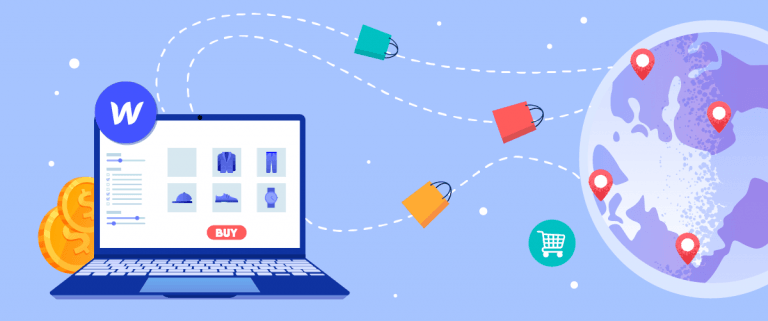Have you ever searched for the “nearest hotel” or “best coffee shop here”? You must have, right? Well, that’s the power of Local SEO. Imagine if your business, whether it’s a food stall, a repair shop, or an online store, can appear in the first search results when people like you search. That’s cool, right?
By optimizing Local SEO, your business will be more easily found by potential customers around you. Want to know how? Check out the following tips.
What is Local SEO?

Local SEO is a set of strategies that help local businesses appear more prominently in location-based search results on search engines like Google Search and Google Maps. With local SEO, your business profile, such as Google Business Profile, can rank higher in local search results, such as when someone searches for “nearby restaurants” or “most comfortable hotels in city X.” In addition, Local SEO also improves your website’s ranking in organic search results.
Unlike general searches that are more global, Local SEO focuses on reaching people in a more specific location, such as a particular city or region. This especially benefits businesses with physical locations, such as restaurants, shops, clinics, and local service providers.
For example, in the following example, we will try to search for “nail art in Chicago.” Some nail art service recommendations will appear below.
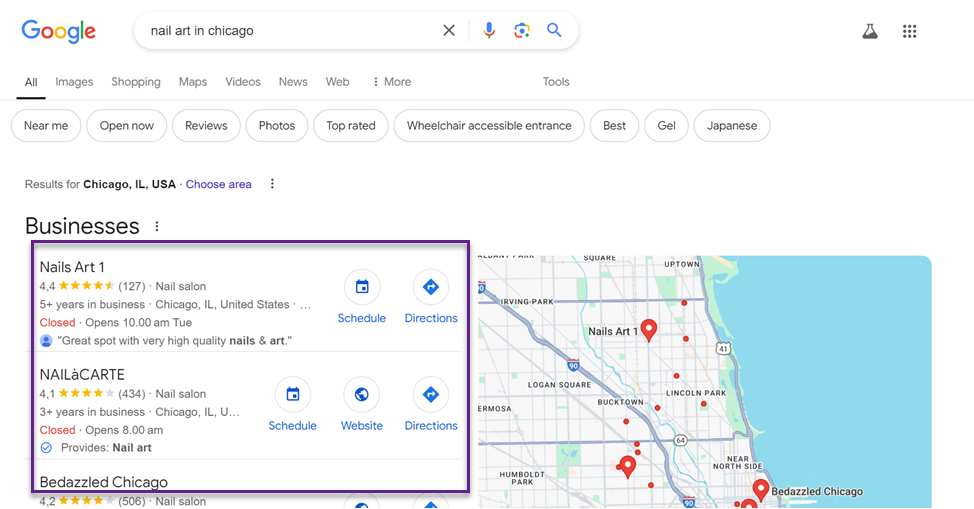
Optimizing local SEO for your business will help your business appear on Google Business Profile, and your website appear on top searches, for example, for “NAILaCarte.”
Their website also appears on top searches, not just the GBP.
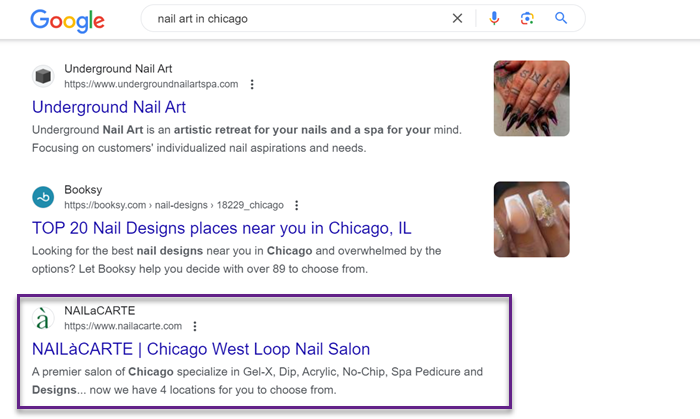
Why does Local SEO matter for businesses?

Optimizing SEO can provide several benefits for your business, here are some of them.
- Increased visibility: Local SEO helps your business appear prominently in local search results on Google Search, Google Maps, and other search engines. This means more potential customers can easily find and discover your business.
- Targeted traffic: Local SEO ensures that your business reaches people actively searching for products or services in your location. This leads to more qualified traffic and higher conversion rates.
- Improved credibility: Businesses with solid local SEO rank higher in local search results. This can enhance your business’s credibility and reputation, making it more trustworthy in the eyes of potential customers.
- Enhanced customer experience: Local SEO can improve the customer experience by making it easier for customers to find your business, learn about your offerings, and contact you. This can lead to increased customer satisfaction and loyalty.
How to optimize local SEO for your business
After we determine what benefits your business will receive, we will discuss what you need to do to optimize local SEO for your business.
Create and optimize Google Business Profile
Google Business Profile is a free tool that helps your business appear in local search results. When someone searches for a business like yours on Google or Google Maps, having a well-optimized profile makes it easier for them to find you. It helps your business rank higher in the “local pack” — those top results on Google Maps or when someone searches for businesses nearby. Optimizing your GMB profile boosts visibility and brings more customers to your physical location.
To create a Google Business Profile for your business, visit the link https://business.google.com/. Then, you will be asked to fill in some information, starting with the business name.
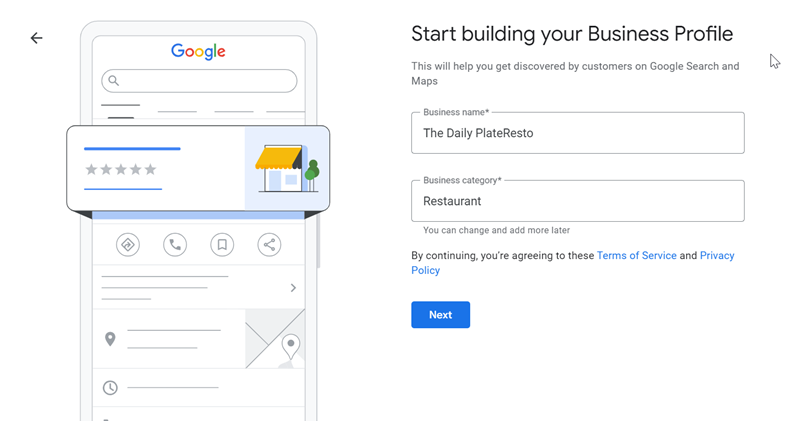
Then, the business address.
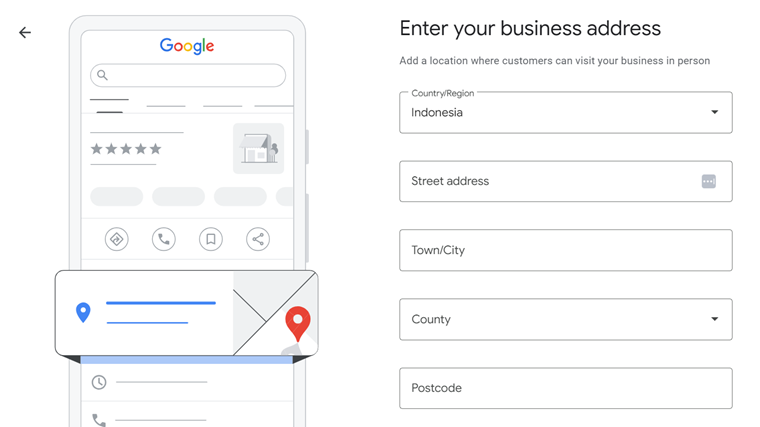
And a few other steps you’ll need to complete. Make sure, when creating your GBP profile, the following details are accurate and complete.
- Business name: Use your legal business name.
- Address: Make sure your location is correct so customers can find you.
- Contact details: Include a phone number and email so customers can easily contact you. These are just the basics, but the more details you provide, such as working hours or photos, the better your chances of standing out.
Update your GBP profile regularly to keep it effective. Add new photos, respond to reviews, and ensure your working hours are accurate, especially during holidays. Use relevant keywords in your description to match what people are looking for. The more you maintain and optimize your profile, the more Google sees you as a trustworthy business, thus improving your local ranking.
Here is an example of one of the GBP results for the keyword search “nail art in Chicago” in the following GBP, the owner entered complete information starting from.
- Shop opening hours
- Contact phone number
- Their website link
- What services do they offer
- Address
- Reviews that the owner frequently responds to
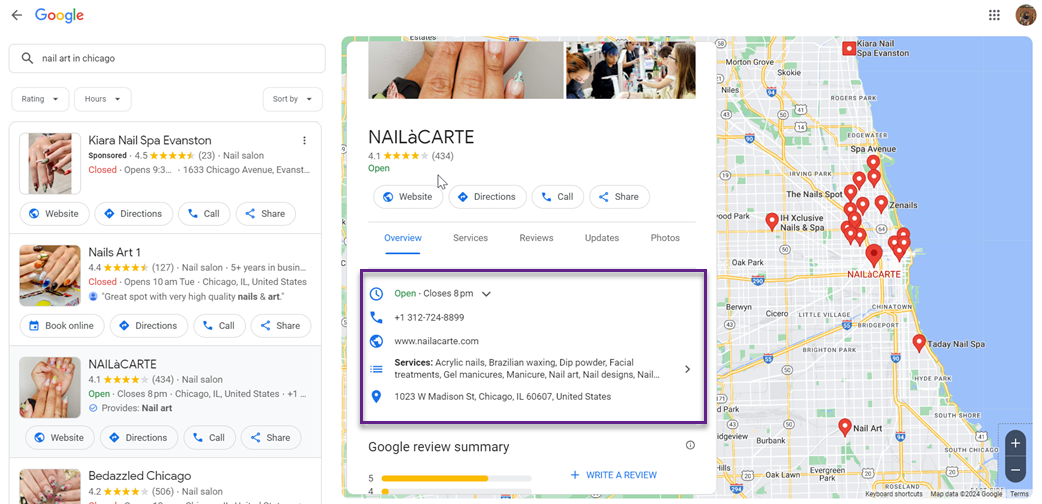
Local keyword strategy
The second tip for optimizing local SEO for your business is local keyword research. Local keyword research means finding the search terms people use when looking for products or services in the immediate area.
This is important because using the right keywords can help your site appear higher in search results. An easy way to start is by listing keywords that potential customers might use to find your business. In researching local keywords, you can use several methods, including.
Competitor keyword research
One of the best ways to find relevant keywords is to analyze competitors’ use. You can use a tool like Semrush’s Keyword Gap to see what keywords are bringing in traffic for them but are not being used by you.
You need to enter your website’s and competitor’s domain names. For example, we will compare two websites that provide flower services/products in York. Select the country and click Compare.
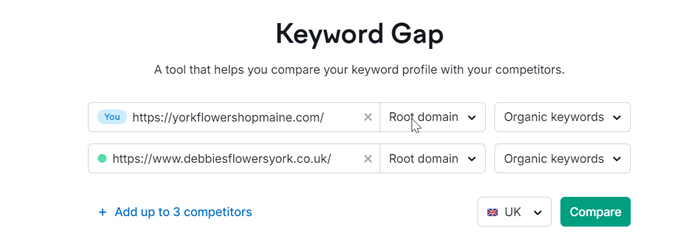
This comparison shows that the second website still leads to most keywords. This keyword gap can be an opportunity for the first website to start optimizing the following keywords.
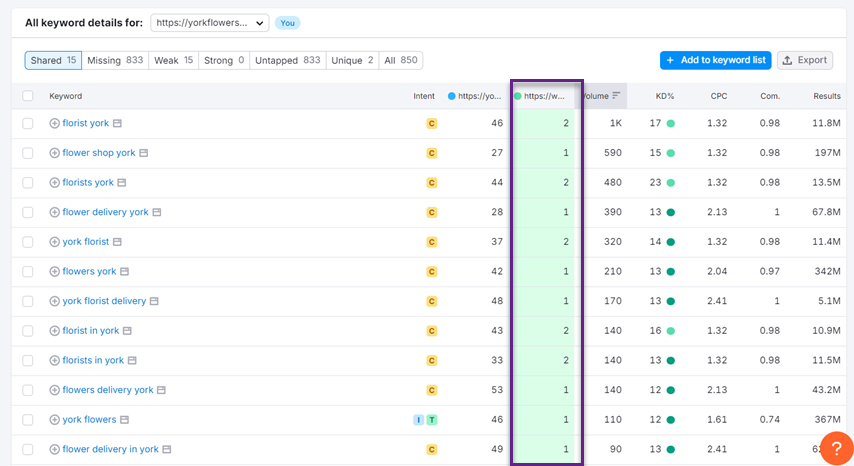
Use Google autocomplete
Apart from utilizing keyword gaps, you can also use Google Autocomplete to predict what people will search for based on the words they type. This can be very useful for finding long-tail keywords.
For example, when you type “software companies in Los Angeles,” Google will automatically complete it with locations such as “software companies in Los Angeles USA” or other keyword suggestions, as shown below. These keywords that appear can also be used as local keyword strategy material that you optimize on the website.
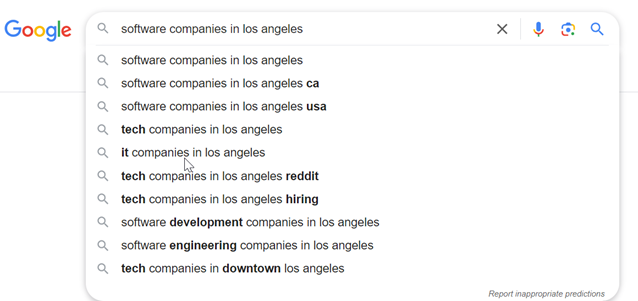
Region-specific keywords
Keywords that include the location’s name are very important for Local SEO. For example, if you run an apartment cleaning services business in NYC, using keywords like “apartment cleaning services in NYC” or “apartment deep cleaning services NYC” can help your business be more easily found by potential customers in the area. The more specific you target your location, the more relevant your business will be to local users.
Optimize your website's contact page
Optimizing the contact page on your website is also an important factor in local SEO optimization for your business. If the contact page is set up well, it can increase visitors’ trust and make them more comfortable interacting with your business.
Here are the important details that should be present on a contact page:
- Physical address
- Phone number
- Business email
- Simple contact form
- Links to business social media accounts
In addition, make sure to add Google Maps on the contact page so visitors can instantly find your business location. This makes it easier for those who want to visit your place directly without searching again on a digital map. With just a few clicks, they can get directions to your location.
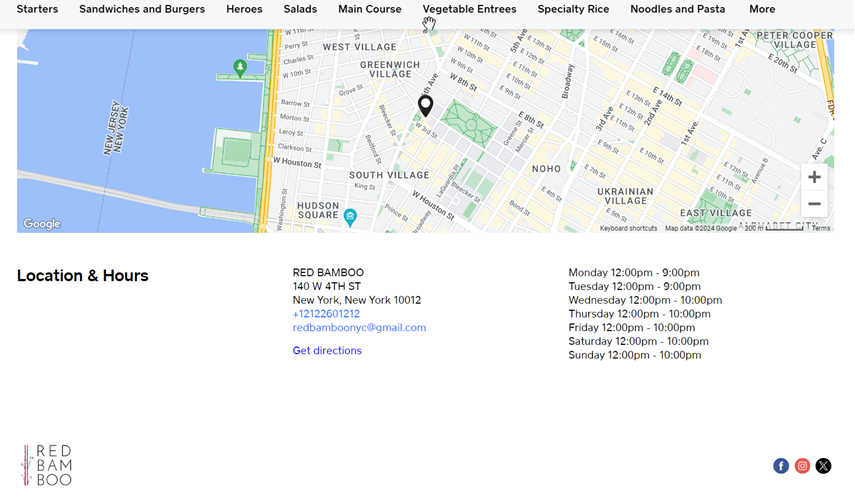
In addition to making it easier for potential customers, adding business contact information to your website also helps search engines understand your business location. This way, search engines recommend your business when users search for that specific keyword.
Optimize your on-page SEO
Optimizing local on-page SEO means ensuring the content on your website is relevant to local searches, making it easier for potential customers in a specific area to find. With good on-page SEO, your business can stand out in local search results, increase traffic to the site, and even encourage physical visits if you have a physical business location.
On-page SEO focuses on elements within your site, such as using local keywords. For example, if you run a flower delivery service in New York, you want your site to appear when someone searches for “flower delivery near me” in that area. To achieve this, you must conduct local keyword research and find terms commonly used by your local audience that are relevant to your business. Some important factors in on-page SEO that influence local search rankings include:
Keyword placement
Local keywords should be strategically spread throughout your website content. Ensure these keywords appear in the title, headings, opening paragraph, closing paragraph, permalinks, and meta descriptions. Don’t forget to include the location in your keywords, such as “vegan restaurant in Hamburg.”
ALT tags for images
Search engines also scan visual elements on your site in addition to text. Ensure the images you use have alt tags relevant to local keywords. For instance, if you display an image of your physical store, use an alt tag like “vegan restaurant in central Hamburg.” These ALT tags can be set when uploading images to a content editor like WordPress.
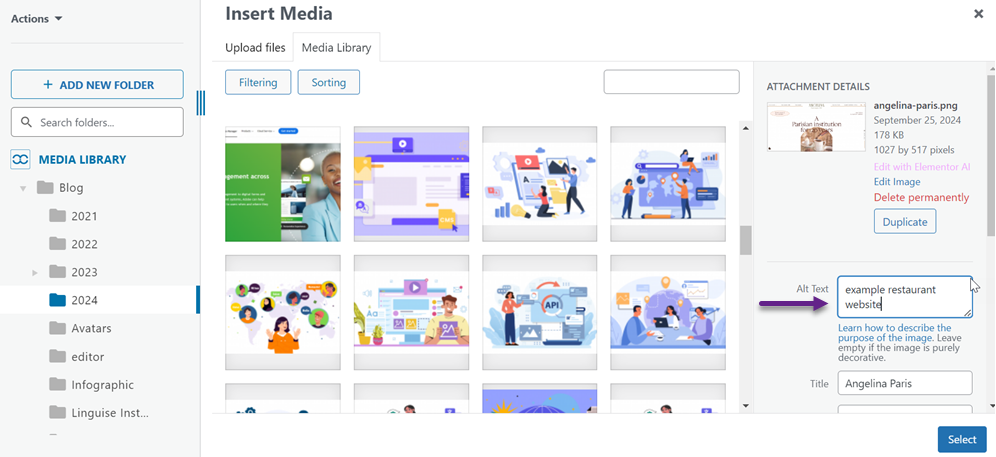
Meta description and title tag
An optimized meta description and title tag significantly impact local rankings. Create an engaging description by mentioning the target location or area. This helps improve SEO and makes users more inclined to click on your link.
Localized content
Content relevant to the local area, such as blogs or location-specific pages, helps search engines recognize that your site serves a particular region. For instance, writing articles like “Tips for Choosing Wedding Flowers in New York” or “7 Favorite Restaurant Recommendations in Hamburg” can attract both local users and tourists.
To create effective localized content, ensure the following to keep visitors engaged:
- Localized images/media
- Currency, date, and time formats
- Content formatting (e.g., Right-to-left writing for certain languages)
Here is an example of content localization on Coca Cola’s website. On their Korean website, they use an image of a girl band, which is one of the icons of Korea.
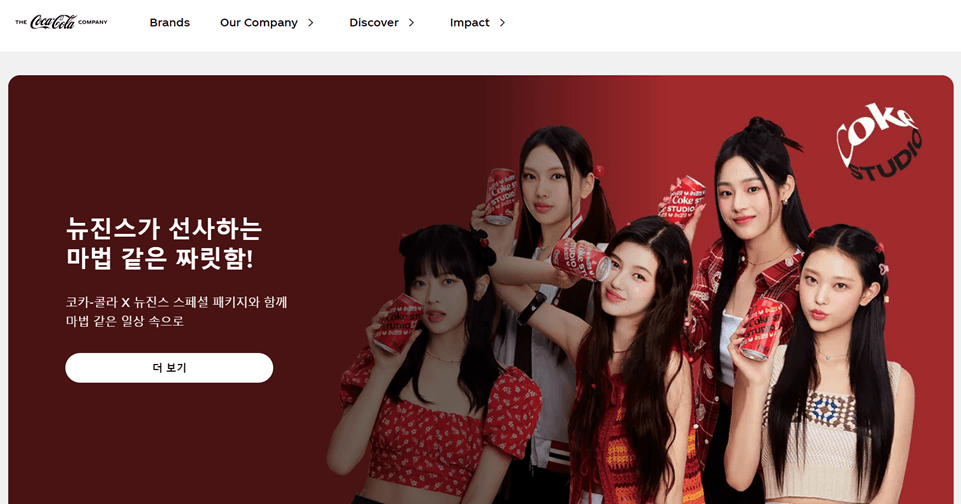
By applying these elements, local customers will find your website more easily, increasing the chances of gaining more online and offline traffic and conversions.
Ensure your website supports the local language
When providing localized content for your target country, it’s essential that your website also supports the local language and other relevant languages. Users who visit your site and see content in a language they understand will feel more comfortable and confident that your business meets their needs.
This not only enhances user experience but also directly impacts SEO. Some of the benefits include.
- Increased user engagement
- Reduced bounce rate
- Higher conversion rates
For time efficiency in translating website content, consider using automated translation services like Linguise. With these services, you can automatically translate your website into multiple local languages without creating new content from scratch.
Additionally, you can customize a language switcher to help visitors easily switch between languages, such as on the eCommerce site jaderoller.com, which offers several languages and multiple currency options to enhance the user experience.
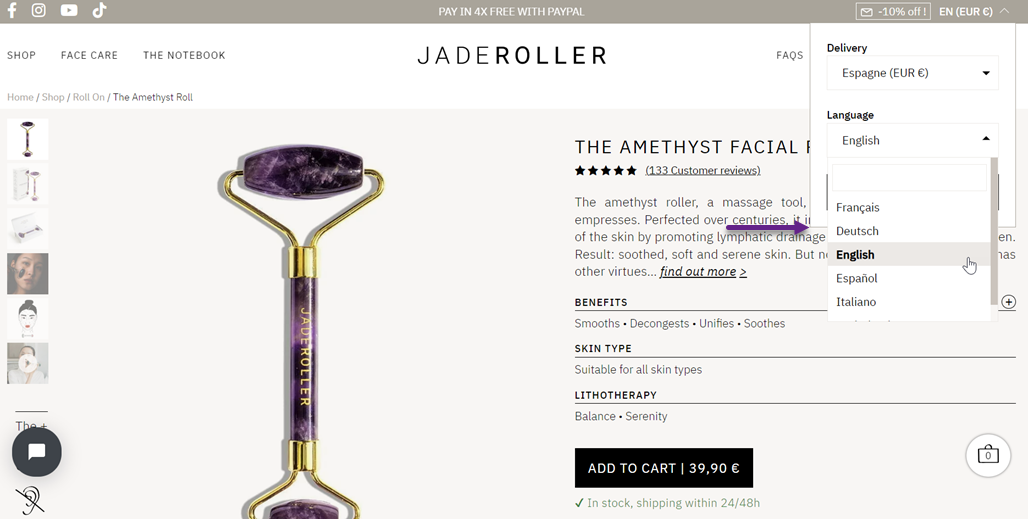
Technical SEO for local search

Technical SEO forms a crucial foundation to boost your website’s ranking in local searches. It involves optimizing behind-the-scenes elements of your site to ensure search engines like Google can crawl and index it efficiently. Key factors for local search include mobile optimization, local schema markup, site speed, and local structured data.
- Mobile optimization – Most internet users now access information via mobile devices. Ensure your site is mobile-friendly to avoid lower rankings in local search results. Google prioritizes good user experiences on mobile, making mobile optimization essential.
- Local schema markup – Adding local schema markup helps search engines better understand your business by providing information such as your address, hours of operation, and customer reviews. For instance, if you run a restaurant, local schema markup can help Google display details about your location, menu, and operating hours in search results.
- Site speed – Slow-loading websites drive users away. Optimizing your site speed through image compression, caching, and removing unnecessary code can improve user experience and help boost visibility in local search results.
Local social media presence
Social media enables businesses to directly engage with potential local customers, share relevant content, and boost brand awareness on a local level.
To reach local social media users, focus on your target audience near your business location. Different social media platforms cater to different audiences, so choose the one most used in your area. Facebook and Instagram are typically top choices since both allow businesses to post physical locations in their updates. However, if your local audience is more active on platforms like TikTok or Twitter, consider establishing a presence there.
Personalized and make multilingual social media content for your local community helps build a deeper connection with your audience. Highlight local activities, special promotions, or relevant community events. Use local hashtags and tag your location in each post to enhance your business’s visibility among local users. For example, a nail art business in Chicago celebrating Halloween is a great way to engage the local community.

Encourage customer reviews & respond to feedback
You can improve service quality and build stronger customer relationships by actively gathering more reviews and responding to them. Here’s how to encourage more reviews and effectively respond to them.
To collect more reviews, directly encourage your customers by asking for feedback after using your service or product. This can be done through email, a link on your website, or even signage in your physical store that reminds customers to leave a review.
Respond to their reviews. Thank them for their positive reviews, and express your appreciation. However, don’t ignore negative reviews. Instead of viewing them as criticism, see them as opportunities to improve. Explain how you will address the issue and invite the customer to return. This enhances your brand perception and shows you are responsive to customer needs.
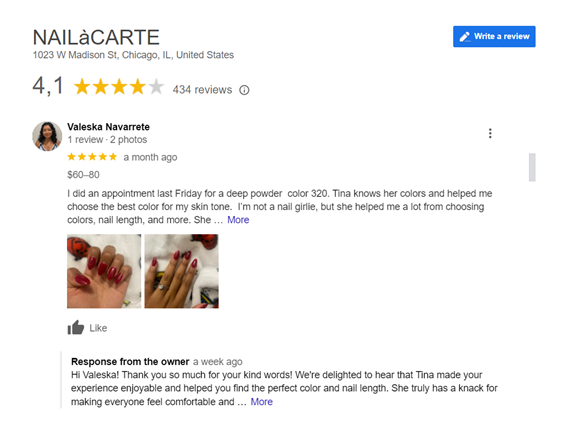
Participating in local events

Joining local events is one of the most effective ways to introduce your business directly to the community. It also provides an opportunity to engage with potential customers and increase brand awareness. For example, a restaurant could set up a tasting booth at a local festival, while a clothing store might run a pop-up shop at a market. Participating in local events makes Your business more familiar and connected to the community.
This is important, because participating in community events allows you to showcase your products and services directly and helps you build relationships with customers who might not yet know your business.
Conclusion
By implementing the strategies discussed, from optimizing your Google Business Profile to actively engaging in local events, your business will become more visible to potential customers in the surrounding area. Start with small steps, like creating and optimizing your Google Business Profile or improving your website’s contact page.
The sooner you take action, the quicker your business will benefit from increased local search visibility. And don’t forget to support multilingual functionality on your website. So, what are you waiting for? Create your Linguise account and enjoy fast, accurate automatic translations, allowing local users to understand your content fully.




